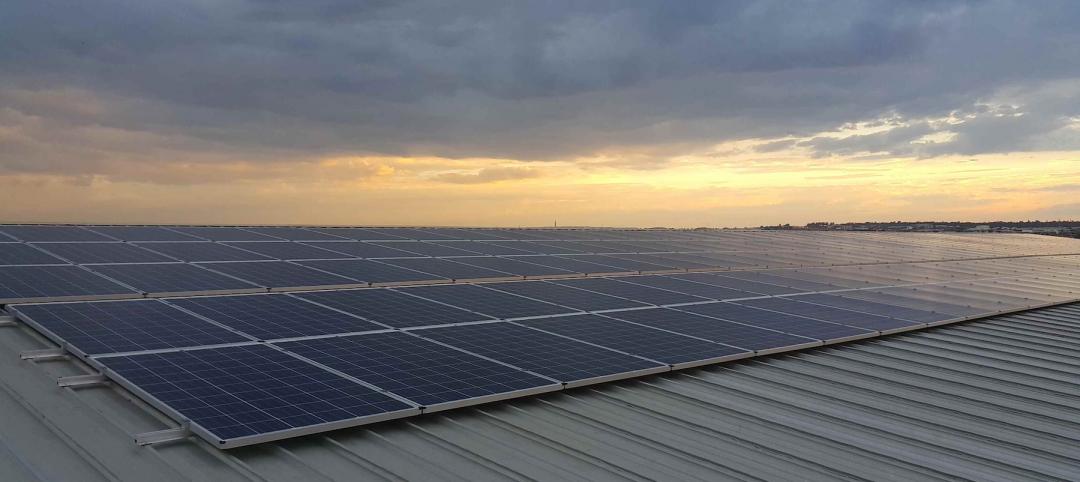The complete findings from our inaugural Giants 300 Technology and Innovation Study will be available soon at BDCnetwork.com/2019TechSurvey. This 12-question survey was emailed to all 486 firms that participated in BD+C’s 2019 Giants 300 Report; 130 firms completed the tech survey, for a participation rate of 26.7%.
The objective of the study was to gain a deeper understanding of the state of AEC technology adoption and innovation initiatives at the nation’s largest architecture, engineering, and construction firms. There are dozens of takeaways from this study, including which tech tools are being used most frequently, and which tools offer the best ROI (see our recap on page 40).
One takeaway that stood out for me was the astonishingly high adoption rate of offsite construction among the general contractors and construction management firms. Of the 35 GCs and CMs that participated in the survey, 25 firms (71.4%) indicated that they use offsite/prefab construction on projects, and, incredibly, nearly half (45.7%, or 16 firms) use offsite construction on “all” or “many” projects.
Of the 10 firms that currently are not implementing offsite construction on projects, three firms are pilot-testing offsite processes and four are considering the approach for future application. That leaves just three firms (8.5%) that indicated they have zero interest in offsite construction—which means we’re looking at an adoption rate of more than 90% among the nation’s largest GCs and CMs.
When asked to pinpoint the single most significant AEC technology innovation their firm has initiated in the past year with positive results, DPR Construction’s National Director of Innovation, Kaushal Diwan, cited the use of multitrade/multiscope prefabrication through its strategic partnership with Phoenix-based prefab provider Digital Building Components: “The ability to take more complex work offsite while other work proceeds, then bring ready-to-install elements to the site is a significant advance in the use of prefabrication. With the existing labor shortage and desire to still have speed-to-market, we think we’re only beginning to see the possibilities.”
Speed, quality, advanced coordination, and schedule gains are commonly cited as benefits of offsite construction. But what about hard-dollar ROI?
“Our current metrics savings show that prefabricating with Digital Building Components offsite saves 10–20% on overall cost,” said Diwan. “It can save time by improving installation efficiency by 20–30%, and it increases quality by reducing rework to less than 1%.”
The caveat, added Diwan, is that these results “are only possible through deep adoption and integration with virtual design and construction and robotics technology, which Digital Building Components uses.”
Related Stories
Sports and Recreational Facilities | Apr 25, 2022
Iowa's Field of Dreams to get boutique hotel, new baseball fields
A decade ago, Go the Distance Baseball formed to preserve the Iowa farm site where the 1989 movie Field of Dreams was filmed.
Building Team | Apr 22, 2022
EarthCam Adds Senior Leadership Roles to Facilitate Rapid Growth
EarthCam today announced several new leadership positions as it scales up to accommodate increasing demand for its webcam technology and services.
Architects | Apr 22, 2022
Top 10 green building projects for 2022
The American Institute of Architects' Committee on the Environment (COTE) has announced its COTE Top Ten Awards for significant achievements in advancing climate action.
Mixed-Use | Apr 22, 2022
San Francisco replaces a waterfront parking lot with a new neighborhood
A parking lot on San Francisco’s waterfront is transforming into Mission Rock—a new neighborhood featuring rental units, offices, parks, open spaces, retail, and parking.
Legislation | Apr 21, 2022
NIMBYism in the Sunbelt stymies new apartment development
Population growth in Sunbelt metro areas is driving demand for new apartment development, but resistance is growing against these projects.
Building Team | Apr 20, 2022
White House works with state, local governments to bolster building performance standards
The former head of the U.S. Green Building Council says the Biden Administration’s formation of the National Building Performance Standards Coalition is a “tremendous” step in the right direction to raise building performance standards in the U.S.
Market Data | Apr 20, 2022
Pace of demand for design services rapidly accelerates
Demand for design services in March expanded sharply from February according to a new report today from The American Institute of Architects (AIA).
Multifamily Housing | Apr 20, 2022
A Frankfurt tower gives residents greenery-framed views
In Frankfurt, Germany, the 27-floor EDEN tower boasts an exterior “living wall system”: 186,000 plants that cover about 20 percent of the building’s facade.
Healthcare Facilities | Apr 19, 2022
6 trends to watch in healthcare design
As the healthcare landscape continues to evolve, IMEG’s healthcare leaders from across the country are seeing several emerging trends that are poised to have wide-ranging impacts on facility design and construction. Following are six of the trends and strategies they expect to become more commonplace in 2022 and the years to come.
Energy-Efficient Design | Apr 19, 2022
A prefab second skin can make old apartments net zero
A German startup is offering a new way for old buildings to potentially reach net-zero status: adding a prefabricated second skin.

















